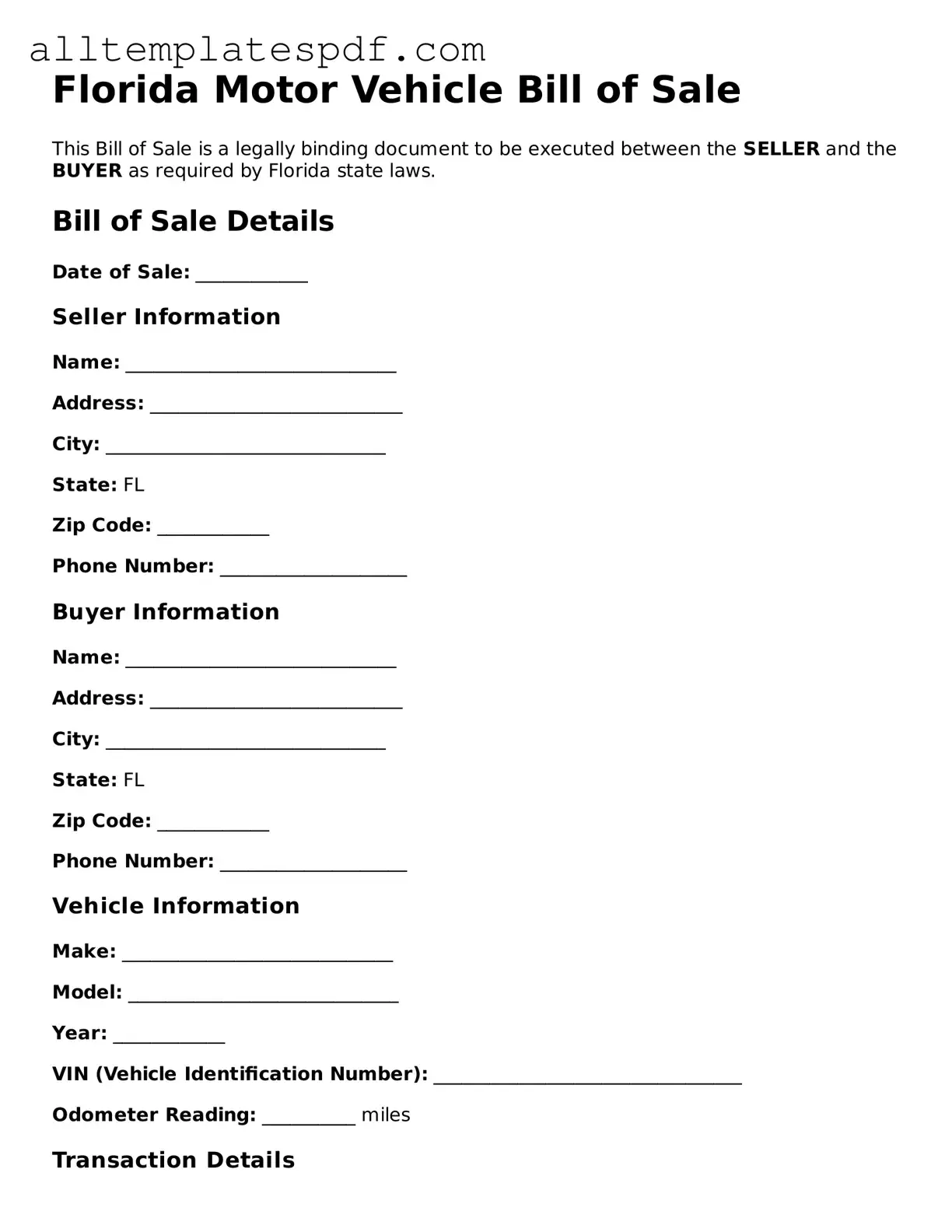Filling out the Florida Motor Vehicle Bill of Sale form can seem straightforward, but there are common mistakes that people often make. One frequent error is leaving out the vehicle identification number (VIN). This number is crucial for identifying the vehicle and ensuring that the transaction is valid. Without it, the document may not hold up in future transactions.
Another common mistake is not providing accurate information about the buyer and seller. It is essential to include full names and addresses. Omitting or misspelling these details can lead to confusion or disputes later on. Make sure to double-check the information before submitting the form.
Many people also forget to include the sale price. This figure is important for both parties, as it establishes the value of the vehicle and may be needed for tax purposes. Leaving this blank can complicate the sale and create issues with the Florida Department of Highway Safety and Motor Vehicles.
In addition, some individuals neglect to sign the form. Both the buyer and seller must sign to make the sale official. Without signatures, the document is incomplete and may not be legally binding. It's a simple step, but it can easily be overlooked.
Another mistake involves failing to date the form. A date is essential for establishing when the transaction occurred. This information can be critical if there are any disputes or questions about the sale in the future. Always remember to include the date.
People may also misinterpret the requirements for notarization. While notarization is not always necessary for a bill of sale in Florida, some individuals mistakenly believe it is required. Understanding the specific needs for your transaction can save time and effort.
Lastly, individuals sometimes forget to keep a copy of the completed bill of sale. It is wise to retain a copy for personal records. This document serves as proof of the transaction and can be helpful for both the buyer and seller in case of future issues.
